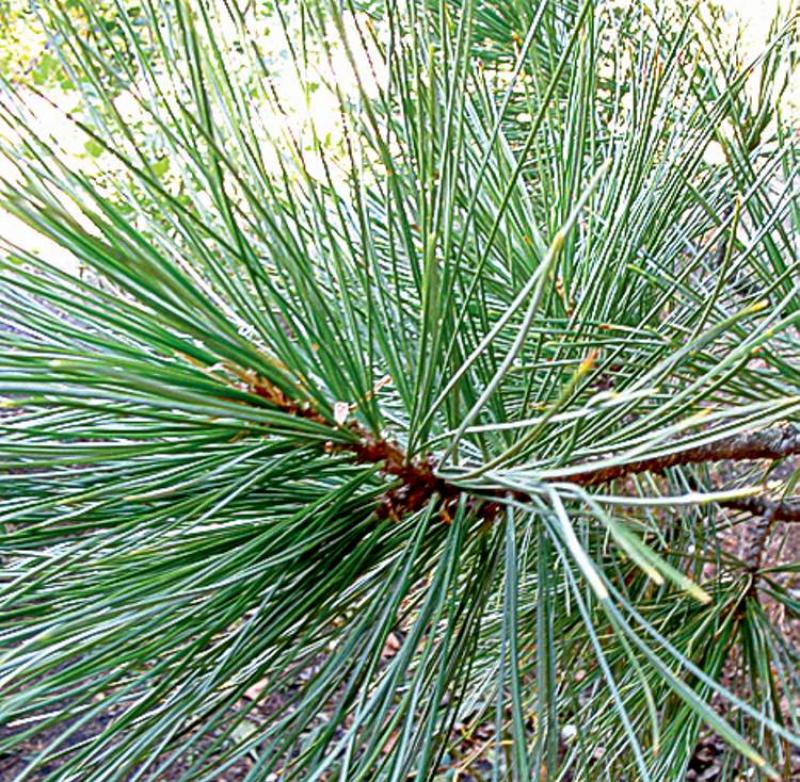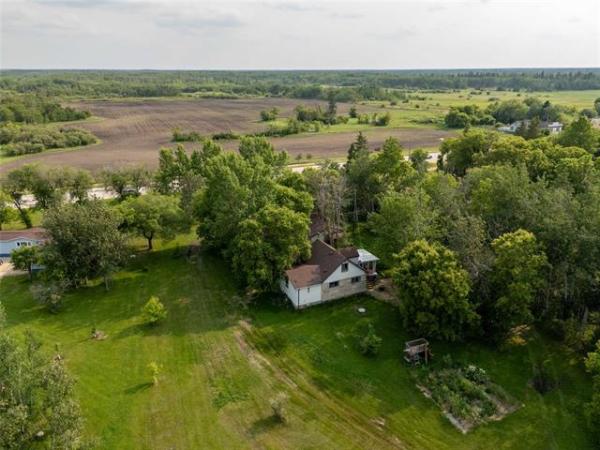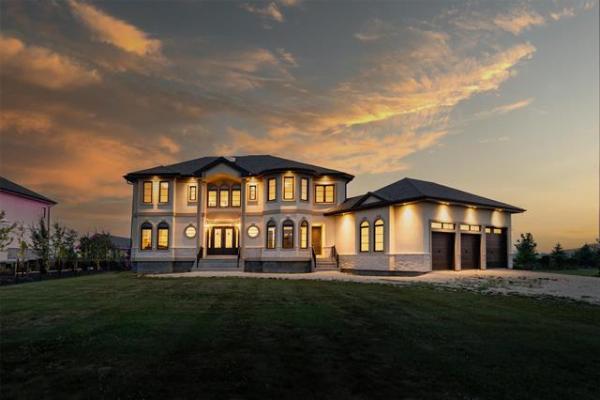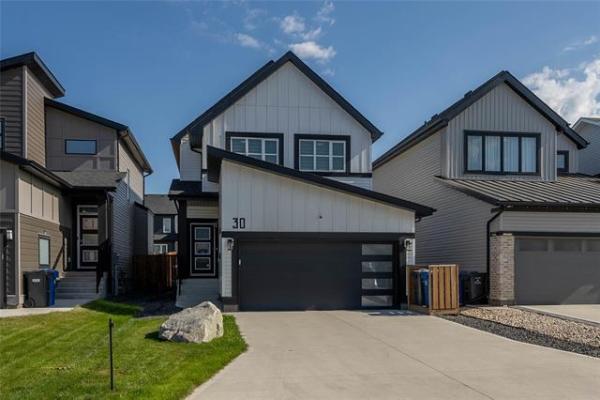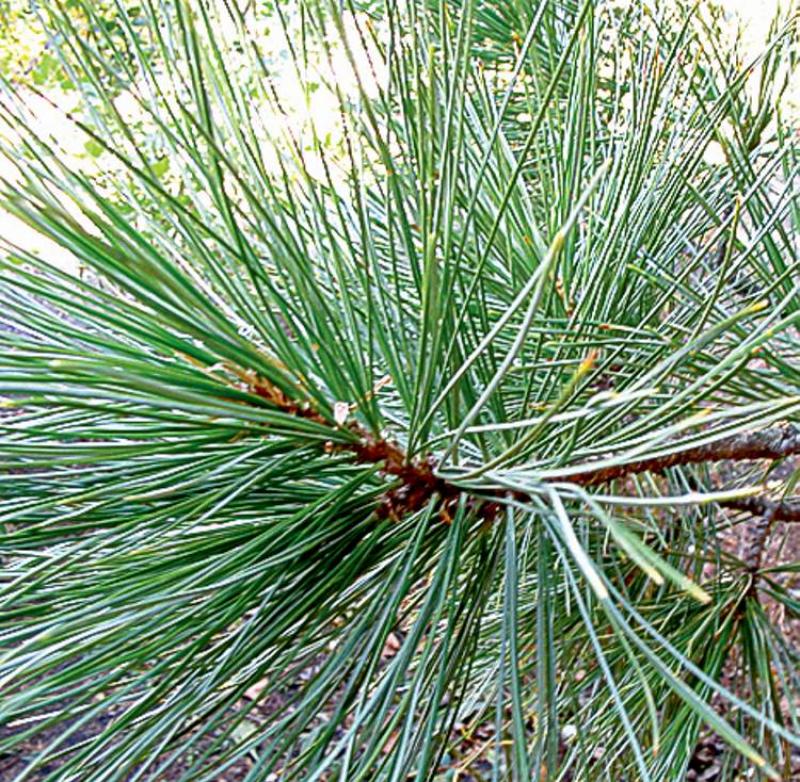

Architectural presence
In fall, deciduous trees command our attention with their changing colours. Once their leaves drop, the outline of their shape continues to have a structural impact on the winter landscape. But conifers, more commonly called evergreens, provide an architectural presence with all-season colour and texture.
In addition to wind protection and shade, evergreens "planted on the northwest side of a home create windbreaks that can shield it against wind and snow, reducing heating costs by as much as 30 per cent," the Tree Canada Foundation says. They also provide shelter and food for birds.
Are evergreens, by the nature of their stature at maturity, too large for today's smaller urban properties? Not so, says Dave Klassen, a contributor to today's column and owner of Shannon Oaks Tree Farm, a wholesale nursery located in Morden. Klassen's advice to new homeowners is to capitalize on the beauty of evergreens for any size of landscape.
Todd Stefanyshyn, a Clandeboye resident and landscaper with 35 years of experience, makes extensive use of evergreens and couldn't agree more.
"I like their presence in the year-round landscape," he says, adding his favourites include the 'Meyer' Spruce (for its density and hardiness) and the 'Select' Blue Spruce with needles that are an intense silver-blue.
-- -- --
Brandon's Central Community Centre, 529-4th Street, will be the site of today's Fall Bulb Sale, hosted by the Manitoba Regional Lily Society, from 9 a.m. to 4 p.m. For more details visit www.manitobalilies.ca
-- Colleen Zacharias
Evergreens play a vital role in the structure and esthetics of our landscapes.
The evergreen group offers a variety of plants ranging from low ground cover shrubs to tall majestic trees. When planting space is limited or in close proximity to your home, shrub or dwarf evergreens are good options. This may include junipers, cedars, and dwarf selections of spruce and pine. If space allows, planting even one large evergreen tree can positively affect your landscape, especially during the winter months.
If you are fortunate enough to have a large urban yard, planting options for larger evergreens greatly increases. Planting three spruce trees in a cluster or a stand-alone majestic pine will add contrast and beauty.
It is advised to factor in the mature height when selecting a plant for a specific location. Evergreens, compared to deciduous plants, are often thought of as slow-growing. This allows us to explore alternative options when using evergreens.
For example, if the desired plant in a landscape is a spruce with a height ranging from six to 20 feet, a dwarf selection may be too small or take a very long time to reach the desired height. Rather, planting a four- to six-foot spruce can quickly fulfil this goal. Due to the tree's modest growth rate, you will enjoy the correct-sized plant for 15 to 20 years. At this point, if the tree exceeds the available space, removal and replacement could be considered. Evergreens naturally shed needles and create a healthy bed of mulch over the years. Following tree removal, you are left with a nutrient-rich soil bed.
Of the many evergreen choices available, I've chosen to identify a few dwarf and tree-form evergreens that are either new to the market or less familiar to most consumers.
Dwarf evergreens include: Thume Blue Spruce (Picea pungens glauca Thume) which has a compact globe shape with blue needles. Ohlendorfii Norway Spruce (Picea abies Ohlendorfii) has a densely conical shape with green needles. Dwarf Serbian Spruce (Picea omorika Nana) has a dense conical form and blue green needles with a white underside, offering an interesting contrast to the landscape. Boisbriand White Cedar (Thuja occidentalis Boisbriand) is a dwarf, rich green cedar with a dense columnar shape.
Tree form evergreens include: Swiss Stone Pine (Pinus cembra) a slower-growing tree with soft blue-green needles. Its density and compact width make it an excellent choice for the urban yard. Ponderosa Pine (Pinus ponderosa scopulorum) is a naturally full pine with long, green needles. Crystal Blue Spruce (Picea pungens glauca) a variety of blue spruce with excellent colour, good form and dense foliage. Meyer Spruce (Picea meyeri) has blue-green needles and a naturally full form with ascending branches. This plant offers excellent ornamental value and is suitable for a variety of planting sites.
We are no longer limited to a spring season when planting evergreens. Nursery practices have evolved to meet the demands and flexibility of a changing marketplace. Container-grown and field potted plants ensure availability of quality evergreens suitable for planting from spring through fall.
The fall season offers a unique opportunity for planting evergreens. The plant's new growth being complete and mature in combination with cooler air temperatures and shorter days significantly helps to reduce planting stress. These conditions enable the plant to place its energy into establishing and expanding root growth in the new site. This root development can continue well into the fall season provided adequate soil temperatures exist. Late-season planting can be an effective, low stress way of establishing new evergreens.
There are several important considerations to ensure a healthy, thriving evergreen in the landscape environment. These include selecting the planting site, soil quality and planting technique.
Evergreens in general require full sun, with the exception of some shrub types that will tolerate partial shade. Good drainage and plenty of productive soil are important for proper establishment and healthy growth.
Once you have selected a site, check the depth of your productive soil layer. Depending on the size of your plant, quality soil should exist to at least the bottom of the root ball, preferably a little deeper and well beyond the circumference of the plant.
Position the root ball so the top surface matches with the surrounding grade. Do not plant deeper. Firm the soil around the root ball to remove all air pockets. Follow by watering thoroughly. If the plant has been grown in a soil-less medium, cover the top surface of the root ball with a thin layer of soil to prevent moisture loss and drying of the root ball.
This will create a slight mound effect.
After planting, add a layer of mulch to preserve moisture, moderate soil temperature, suppress weeds and offer additional winter protection. A good portion of an evergreen's beneficial roots are close to the surface. Preventing dehydration in this root zone is critical.
Evergreens in the landscape often require minimal care and maintenance. Water when conditions become dry during the growth and maturing stages, and then again in the fall leading up to winter. Fertilizing when the tree is deficient and some occasional pruning often complete the basic care requirements of evergreens.
Most evergreens growing in productive soil require very little, if any, addition of fertilizer. Possible symptoms of a nutrient deficiency include stunted growth, pale colour and shorter needle length. Newly planted evergreens may exhibit similar characteristics until they become established and do not necessarily require addition fertilizer.
Fertilize in early spring prior to bud break or during the active growth cycle. Often, underlying conditions such as soil quality and plant location are the cause of nutrient deficiency. In this case, proper diagnosis along with a regular maintenance plan, including fertilizing, may be required. Consult your local professional to determine cause and provide recommendations.
Pruning helps to maintain the health and natural appearance of an evergreen. Removal of dead and broken branches can be done at any time of year. In tree form evergreens, a central leader is essential to proper development and overall appearance of the plant. Occasionally due to breakage or a terminal bud not breaking, the existing leader may be lost. If a new leader does not naturally form, it may be necessary to train up a lateral shoot or branch. When multiple leaders develop keep the strongest one and remove the rest.
Early spring, prior to bud break, or late spring/early summer when new growth is fully extended but not yet mature, is an excellent time to prune most evergreens with the exception of pine, which should be pruned in spring while new growth is still emerging. Buds form only at the tips of each shoot and this will allow for the development of new buds. This is an effective way to increase density and limit tree/shrub size.
In all evergreens, individual shoot pruning is useful in controlling overall shape as in width, height and density, while maintaining a natural-looking tree. Shearing to create a formal looking plant should be limited to new growth in late spring/early summer. Pruning should be limited to the most recent growth if possible.

